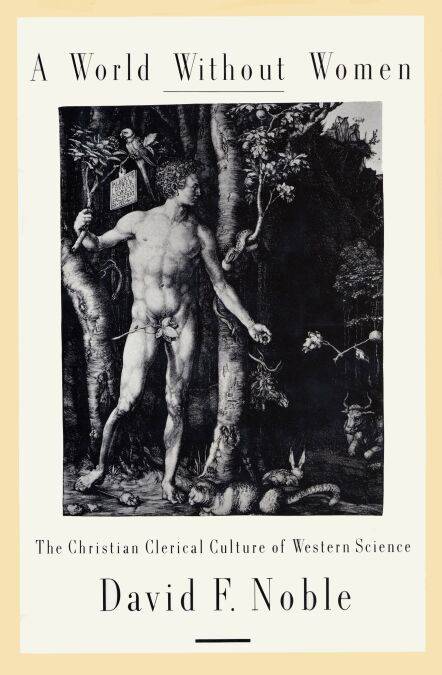
- Afhalen na 1 uur in een winkel met voorraad
- Gratis thuislevering in België vanaf € 30
- Ruim aanbod met 7 miljoen producten
- Afhalen na 1 uur in een winkel met voorraad
- Gratis thuislevering in België vanaf € 30
- Ruim aanbod met 7 miljoen producten
Zoeken
A World Without Women E-BOOK
The Christian Clerical Culture of Western Science
David F. Noble
E-book | Engels
€ 17,27
+ 17 punten
Omschrijving
In this groundbreaking work of history, David Noble examines the origins and implications of the masculine culture of Western science and technology. He begins by asking why women have figure so little in the development of science, and then proceeds—in a fascinating and radical analysis—to trace their absence to a deep-rooted legacy of the male-dominated Western religious community. He shows how over the last thousand years science and the practice and institutions of higher learning were dominated by Christian clerics, whose ascetic culture from the late medieval period militated against the inclusion of women in scientific enterprise. He further demonstrates how the attitudes that took hold then remained more or less intact through the Reformation, and still subtly permeate out thinking despite the secularization of learning.
Noble also describes how during the first millennium and after, women at times gained amazingly broad intellectual freedom and participated both in clerical activities and in scholarly pursuits. But, as Noble shows, these episodic forays occurred only in the wake of anticlerical movements within the church and without.
He suggest finally an impulse toward “defeminization” at the core of the modern scientific and technological enterprise as it work to wrest from one-half of humanity its part in production (the Industrial Revolution’s male appropriation of labor) and reproduction (the millennium-old quest for the artificial womb).
An important book that profoundly examine how the culture of Western Science came to be a world without women.
Noble also describes how during the first millennium and after, women at times gained amazingly broad intellectual freedom and participated both in clerical activities and in scholarly pursuits. But, as Noble shows, these episodic forays occurred only in the wake of anticlerical movements within the church and without.
He suggest finally an impulse toward “defeminization” at the core of the modern scientific and technological enterprise as it work to wrest from one-half of humanity its part in production (the Industrial Revolution’s male appropriation of labor) and reproduction (the millennium-old quest for the artificial womb).
An important book that profoundly examine how the culture of Western Science came to be a world without women.
Specificaties
Betrokkenen
- Auteur(s):
- Uitgeverij:
Inhoud
- Aantal bladzijden:
- 329
- Taal:
- Engels
Eigenschappen
- Productcode (EAN):
- 9780307828521
- Verschijningsdatum:
- 22/01/2013
- Uitvoering:
- E-book
- Beveiligd met:
- Adobe DRM
- Formaat:
- ePub

Alleen bij Standaard Boekhandel
+ 17 punten op je klantenkaart van Standaard Boekhandel
Beoordelingen
We publiceren alleen reviews die voldoen aan de voorwaarden voor reviews. Bekijk onze voorwaarden voor reviews.








